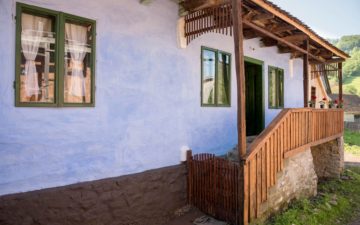Valea Zălanului, administratively belonging to Malnaş, was formed around the glassworks established by the count Kálnoky family in the 17th century. As these forests belonged to Zălan, the settlement was initially called Zălan Glassworks. The polygonal glass windows of St. Michael’s Church from Cluj-Napoca were made here. The glass barn ceased its activity in 1860. Today the main occupations of the locals are meadow agriculture and the related livestock farming as well as forestry.
The village museum was founded by Barna Préda local historian and economist; he turned the house built by his great-great-grandparents in 1896 into a museum. The building is a characteristic Szekler porched house built from wood and plastered with mud, which was restored into its original state with traditional materials and techniques.
The exhibited material presents the past of the settlement from the beginnings to the mid-20th century. The glassware collection collected by the late Zoltán Karácsony, handed over to the museum by his descendants, is a great pride of the exhibition. The ethnographic collection is also rich, containing those tools and equipment that were used by the people from Valea Zălanului. Besides, we can see special documents, perefernum-letters, old pictures and agreements concluded with the erstwhile count Kálnoky in the second half of the 19th century. If someone might be interested in military history, he can admire several soldiers’ photos, memorial plates, equipment and decorations. The visitors can admire the textiles created in Valea Zălanului, and if someone is interested in the art of weaving, she can try it out, as in one room of the museum a fully operational loom is equipped.
It is extraordinary from the perspective of both the settlement and the county that, through his relationship with the Kálnoky family, Charles, Prince of Wales, heir apparent to the British throne, has chosen Valea Zălanului as his place of rest. For this purpose, he had an old peasant house transformed into a guesthouse on the edge of the village.







